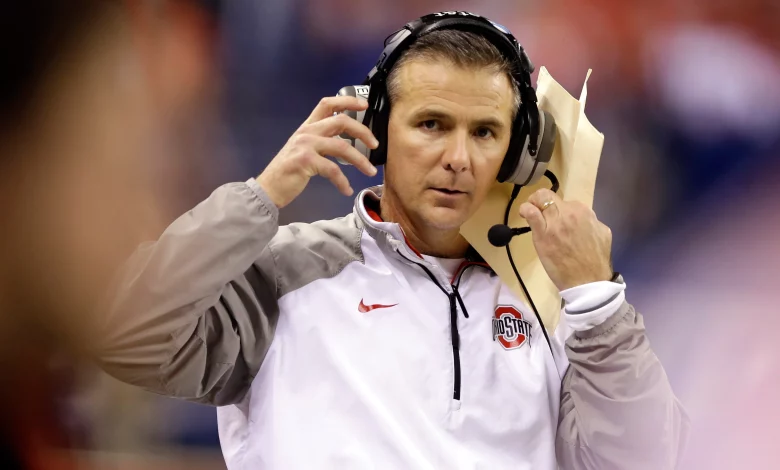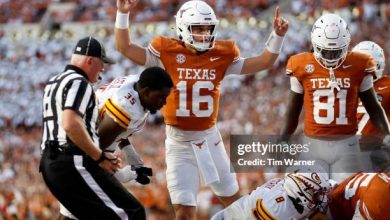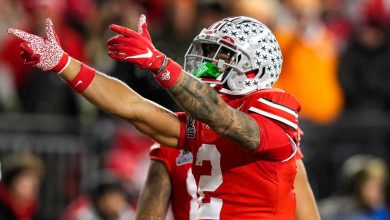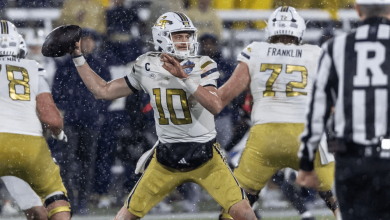Urban Meyer is sounding the alarms, warning of potential challenges ahead for the college football landscape and teams.

Urban Meyer, one of college football’s most successful and influential coaches, has raised alarms about the future of the sport. Over his career, Meyer has coached at some of the highest levels, winning national championships with both the Florida Gators and Ohio State Buckeyes. However, despite his success, Meyer’s perspective on the state of college football is one of cautious concern. With changing dynamics in the sport—ranging from the rise of the transfer portal to the increasing dominance of major conferences—Meyer has expressed significant worries about the direction of college football and the potential long-term challenges that could face teams and programs at every level.
Meyer’s remarks are particularly significant because of his experience. His resume includes overseeing some of the best college football teams in history, including Heisman Trophy winners, NFL draft picks, and national champions. He has been a part of multiple college football eras, which allows him to offer a unique perspective on how the game has evolved and where it may be headed. In this context, Meyer’s concerns should not be dismissed as the musings of a former coach but rather as a reflection of the growing pressures and challenges that college football is currently facing.
The Transfer Portal: A Double-Edged Sword
One of the most notable concerns Meyer has raised in recent years is the growing impact of the NCAA’s transfer portal. Introduced in 2018, the transfer portal allows college athletes to enter their name into a database, making it easier for them to explore transfer options to other schools. While this was intended to give athletes more freedom and control over their collegiate careers, Meyer believes that the portal has unintended consequences that could drastically change the landscape of college football.
Meyer argues that the portal has created an environment of instability, with players moving from school to school more frequently than ever before. The influx of transfers can disrupt team chemistry, hinder player development, and create challenges for coaches who are trying to build long-term programs. For programs like Ohio State, Alabama, and Clemson, which have historically recruited and developed players over multiple years, the portal is a source of uncertainty. While the elite teams may be able to benefit from adding proven talent, the smaller schools are at a disadvantage. Programs that rely on developing players over time are finding it increasingly difficult to maintain consistency when players leave for more established programs.
The impact of the transfer portal is especially pronounced when it comes to recruiting. Meyer has pointed out that college football’s traditional recruitment model is shifting. High school players are no longer the only source of talent for many teams. Instead, coaches are increasingly looking to the portal for instant-impact players. This can make it difficult for incoming freshmen to find a place on the depth chart, leading to a more transactional nature of college football. The pressure to perform quickly has intensified, which could have long-term effects on the development of young athletes and the overall competitiveness of teams.
While Meyer acknowledges that the transfer portal provides opportunities for players who feel they are not being given a fair chance, he cautions that it can also result in a “wild west” environment where teams are forced to constantly adjust to a revolving door of players. The focus on immediate success may undermine the traditional values of team building and player development that have long been a hallmark of college football.
NIL (Name, Image, and Likeness): The Changing Financial Landscape
Another significant shift in college football is the introduction of NIL (Name, Image, and Likeness) rights for student-athletes. In 2021, the NCAA officially allowed college athletes to profit from their name, image, and likeness, leading to a revolution in the way college athletes are compensated. While the move was seen as a positive step for athletes, Meyer has expressed concerns about the long-term implications of NIL, especially for teams that don’t have the financial resources to compete with top-tier programs.
Meyer has highlighted the growing disparity between programs that have large financial backing, such as those in the SEC, and smaller programs that struggle to match the same financial incentives. The NIL landscape has turned college football into an even more high-stakes business, with some schools offering significant amounts of money to recruits in exchange for their commitment. While NIL deals are meant to allow athletes to benefit from their popularity, they have created new pressures for coaches and athletic departments to stay competitive. Programs that are unable to provide lucrative NIL deals may find themselves at a disadvantage when it comes to attracting top talent.
The potential for NIL to impact team chemistry is also a concern for Meyer. As players begin to receive compensation for their performances and marketability, the dynamic between teammates could change. Meyer believes that a focus on individual financial gain could lead to a “me-first” mentality, which could undermine the sense of collective effort that has been a cornerstone of successful programs. The shift from team-focused to individual-focused goals could have a detrimental effect on the culture of college football, making it more difficult for coaches to foster unity and cohesion within their teams.
Meyer has also pointed out that the potential for boosters and wealthy alumni to influence recruitment decisions through NIL deals could further skew the competitive balance in college football. In the past, a team’s success depended largely on coaching, player development, and recruitment. Now, financial backing has become an increasingly important factor in building a successful program, creating a situation where wealthier programs have an even greater advantage over their less affluent counterparts.
The Dominance of Major Conferences
Meyer’s concerns about the future of college football are not limited to the changes brought about by the transfer portal and NIL. He has also expressed concern about the increasing dominance of the Power Five conferences—specifically the SEC and Big Ten—at the expense of smaller conferences. With the growing gap in resources, recruiting, and media rights, Meyer fears that the traditional structure of college football could be on the verge of collapse.
The creation of the College Football Playoff (CFP) in 2014 was a step toward addressing the issue of determining the best team in the country, but it has also inadvertently reinforced the dominance of the major conferences. With teams from the SEC and Big Ten regularly making up the majority of the playoff field, the gap between the “haves” and the “have-nots” has widened. Meyer has warned that this imbalance could further erode the competitive balance of the sport, as smaller programs struggle to keep up with the wealth and resources of their Power Five counterparts.
The future of college football may see further realignment, with the most powerful programs moving toward even greater consolidation. Meyer has pointed out that the growing influence of the SEC and Big Ten could lead to a situation where the sport is dominated by just a few superconferences, leaving smaller schools with little opportunity to compete at the highest level. While Meyer acknowledges that the financial and media advantages of these conferences are undeniable, he believes that the sport’s overall integrity and competitiveness could be compromised if the trend toward further consolidation continues.
The Future of Coaching: A Changing Role for College Coaches
Finally, Meyer has sounded the alarm about the evolving role of coaches in college football. The pressures of recruiting, managing NIL deals, navigating the transfer portal, and keeping players happy have all added new layers to the already demanding role of a college football coach. Meyer has suggested that coaching in the modern era may be more difficult than ever before, as coaches are forced to juggle a multitude of responsibilities that go beyond simply preparing their teams for games.
In the past, coaches were primarily tasked with developing players, creating strategies, and building team culture. Now, they must also serve as CEOs, managing large staffs, dealing with financial negotiations, and keeping up with rapidly changing regulations. The coaching profession has become more high-profile and business-oriented, which means that the traditional aspects of coaching—such as player development and leadership—can sometimes take a backseat to the more transactional elements of the sport.
Meyer has warned that this shift could have long-term consequences for the sport. As college football becomes more of a business and less of a development-focused endeavor, the ability to build programs from the ground up could become increasingly difficult. Coaches may become less focused on the long-term growth of their teams and more concerned with winning immediately, which could further contribute to the instability that Meyer has identified as a major concern for the future of college football.
Urban Meyer’s Call to Action
Urban Meyer’s concerns about the future of college football reflect a deep understanding of the challenges facing the sport. From the rise of the transfer portal to the financial realities of NIL, Meyer is sounding the alarm on a variety of issues that could fundamentally alter the college football landscape. While many of these changes are inevitable, Meyer’s warnings serve as a call to action for both the NCAA and college football stakeholders to consider the long-term implications of these shifts.
As college football continues to evolve, it is clear that the sport will need to strike a balance between tradition and innovation. The question remains: Can college football maintain its competitive integrity, team-oriented culture, and sense of community amidst these changes, or will it devolve into a system where money, instant success, and individualism reign supreme? Urban Meyer’s voice is one of many in the growing conversation about the future of the sport, and his warnings should not be ignored as college football enters a new era.









